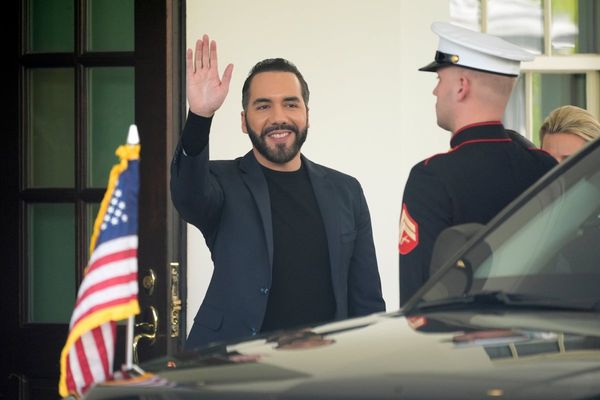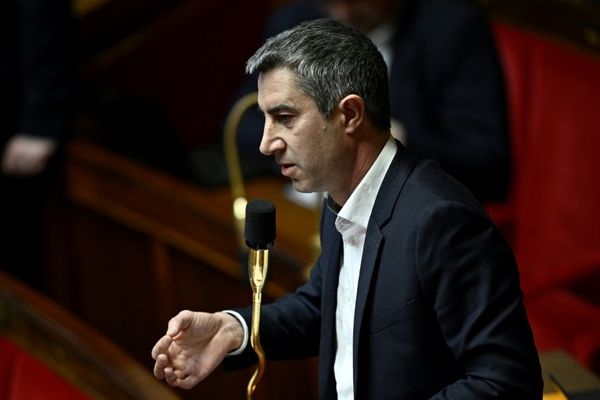
Locked away on his cellphone, Jalen Williams keeps receipts. Screenshots of every criticism, slight and disrespect. Too small, one pre-draft analyst said of him. Too slow. Can’t defend. Isn’t explosive. Doesn’t create his own shot. As a rookie, Williams would scroll through his archive whenever he needed motivation. As a third-year player, an All-Star, a starter on the Western Conference front-runner he … still does. “Average role player, I remember that one,” Williams says. “I’ll look. Just in case I need more incentive to play a little harder.”
Watching Williams now, you wonder—what did teams miss? How did a 6' 6", three-level scorer slip to 12th in the 2022 draft? In a league obsessed with positionless players, how did one with the ball skills to play point guard and the length (an astonishing 7' 2" wingspan) to fill in at center get overlooked? Two players from that draft class have made an All-Star Game. Orlando’s Paolo Banchero, who went first overall after one season at Duke, is one. Williams, who spent three years at Santa Clara, is the other.
Asked why, Williams shrugs. It wasn’t the first time. At Perry High School in suburban Phoenix, Williams was a prolific scorer. But he was small: 6' 1" when he started at Perry, growing just a few inches by his senior year, when he committed to the Broncos. There were no offers from major Division I programs. “That was annoying.” Nothing from any in-state schools, either. “I watched guys I torched get offers,” Williams says. “I felt kind of done wrong.”
At Santa Clara, Williams continued to produce. He averaged 18.0 points as a junior, connecting on nearly 40% of his threes. But when Williams entered his name in the draft pool, interest was minimal. Size, again, was considered an issue. Williams had sprouted to 6' 6" but scouts wondered if he was big enough to play a wing position, or if he could succeed outside of a system. In the WCC, competition was limited. In Santa Clara’s biggest game of his junior season, a home showdown against Chet Holmgren-led Gonzaga, the Broncos were drilled by 32.

Ironically, as OKC studied Williams, that loss stood out. Even with the game out of hand, says Thunder coach Mark Daigneault, “He was just making the next pass and just letting the game tell him what to do.” When OKC brought him in for a group workout, he impressed. Daigneault ran the session. Williams had no idea who he was. When Daigneault talked a little trash to Williams, Williams chirped right back. Later, when Williams figured out that Daigneault was the team’s coach, he called his agent in a panic.
Daigneault, though, loved it. “Hell of a workout,” he says. “And a lot of fun.” Indeed, the more the brass dug into Williams, the more they liked. “He didn’t play the scoreboard, ever,” Daigneault says. “He always competed hard.” When Thunder general manager Sam Presti got an endorsement from Santa Clara head coach Herb Sendek, it resonated. Why? The last player Sendek cosigned to Presti: James Harden, whom Sendek coached at Arizona State.
Like Harden, Williams fit instantly, a long, versatile, two-way player on a team building a roster filled with them. And more. “What I saw was a guy that could be a killer system player with maybe a little bit more upside,” Daigneault says. “What he’s become as a creator, I didn’t know [was possible].” Williams averaged 14.1 points per game his first season, finishing runner-up for Rookie of the Year to Banchero.
Oklahoma City’s success is built on player development, which Williams has thrived in. Last year, Daigneault noted that opponents were basically daring him to take threes in the playoffs. Daigneault pushed Williams to improve his perimeter shot. Early this season Williams had gone the other way and become a little too jumper-heavy. “We really challenged him to play with more force and play at the basket more,” Daigneault says. Each time, Williams responded.
“They have allowed me to evolve here,” Williams says. “Everybody is allowed to grow and be themselves.”
Williams, undeniably, can do more. No team is deeper than Oklahoma City. Point guard Shai Gilgeous-Alexander is an MVP favorite. Holmgren is a budding star. Most nights the Thunder go 10-deep. Sacrifice is required, which is not lost on Williams. “Wiggs [guard Aaron Wiggins] is a good example,” he says. “He could go be a good option somewhere else and maybe shoot more shots and be successful. I always try and keep that in my head when I’m playing the game. They’re going through the same experiences, too. I think that’s how everybody on the team thinks. That’s one of our identities.”
Still, Thunder officials admit that if there’s a wild card in the playoffs, it’s Williams. Depth is less useful in the postseason. SGA is the primary option while Holmgren is a reliable scorer. From Williams, they need a little of everything. An example: In March against Denver, Gilgeous-Alexander had it going offensively in the first half. Williams became a playmaker, collecting four assists. In the second half, the Thunder needed more scoring. Williams racked up 20 points. The Thunder don’t ask him to play different roles, says Daigneault. Williams just does it. “Overcoaching could get in his way,” says Daigneault. “He figures things out without a lot of prompting.”
Oklahoma City needs that. After a 68-win season, expectations are high. The Thunder were battle-tested last postseason, when they swept the Pelicans before losing a six-game grind to Dallas. They didn’t sneak up on anyone this year, starting 15–5 and then winning 15 in a row. “We got everyone’s best shot,” says Williams.
At 24, Williams fits in on a team that began the season with the league’s youngest roster. Skeptics will say he isn’t ready. That’s fine. He’s heard it before. Read it before. See how that turned out.
More NBA Playoffs
- Evan Mobley Has the Magic Touch for East Top Seed Cavaliers
- How the Lakers Surged Into Title Contention One Move at a Time
- Five Trends That Could Decide 2025 NBA Playoffs
This article was originally published on www.si.com as Jalen Williams Isn’t Backing Down in Thunder’s Pursuit of an NBA Title.







